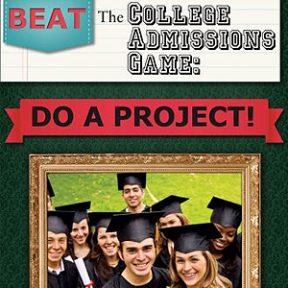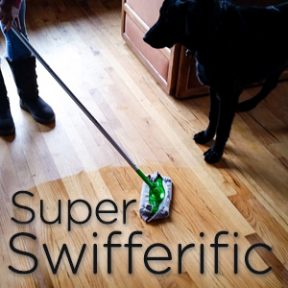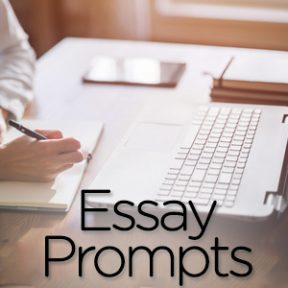 You’ve heard about the savants who can’t brush their teeth but can tell you the day of the week each of our presidents were born. It sounds ridiculous that a savant could memorize or calculate complex formulas in just seconds. While having this skill may seem enticing on first blush, unfortunately savants can’t do this with other more practical applications.
You’ve heard about the savants who can’t brush their teeth but can tell you the day of the week each of our presidents were born. It sounds ridiculous that a savant could memorize or calculate complex formulas in just seconds. While having this skill may seem enticing on first blush, unfortunately savants can’t do this with other more practical applications.
Martin Dresler, cognitive neuroscientist at Radboud University in the Netherlands, looked at the anatomy of memory champions to compare their brains to average people. One of the memory champions, Konrad, also co-authored this study. He uses visual memory to help him remember names. If a person’s name is “Miller,” he might visualize the person’s face looking at a “mill.”
For more abstract memory challenges, he builds “memory palaces” in his mind. By picturing a familiar place like your first home, he takes the list of numbers or objects and places them along the path through his house. If he were memorizing numbers, he might transform the numbers into images. Because these images would be personal, it would stand out along the path through his house.
Dresler and Konrad found that people who learned how to use the memory palace, could use that skill months later. While this is very interesting, it is not conclusive. There are many studies of people who have memorized the Bible or historical dates. When asked to memorize other things like a list of groceries or phone numbers, they perform just like everyone else. So far, these intense memory training programs don’t cure normal forgetfulness.
I find these studies to be fascinating. The more we discover about the way we learn and retain information, the better teachers we’ll be to our children and students. And, if we could find a way to improve memory for our aging population, that would bring relief to millions of people.
[Source]
 You’ve heard about the savants who can’t brush their teeth but can tell you the day of the week each of our presidents were born. It sounds ridiculous that a savant could memorize or calculate complex formulas in just seconds. While having this skill may seem enticing on first blush, unfortunately savants can’t do this with other more practical applications.
You’ve heard about the savants who can’t brush their teeth but can tell you the day of the week each of our presidents were born. It sounds ridiculous that a savant could memorize or calculate complex formulas in just seconds. While having this skill may seem enticing on first blush, unfortunately savants can’t do this with other more practical applications.
Martin Dresler, cognitive neuroscientist at Radboud University in the Netherlands, looked at the anatomy of memory champions to compare their brains to average people. One of the memory champions, Konrad, also co-authored this study. He uses visual memory to help him remember names. If a person’s name is “Miller,” he might visualize the person’s face looking at a “mill.”
For more abstract memory challenges, he builds “memory palaces” in his mind. By picturing a familiar place like your first home, he takes the list of numbers or objects and places them along the path through his house. If he were memorizing numbers, he might transform the numbers into images. Because these images would be personal, it would stand out along the path through his house.
Dresler and Konrad found that people who learned how to use the memory palace, could use that skill months later. While this is very interesting, it is not conclusive. There are many studies of people who have memorized the Bible or historical dates. When asked to memorize other things like a list of groceries or phone numbers, they perform just like everyone else. So far, these intense memory training programs don’t cure normal forgetfulness.
I find these studies to be fascinating. The more we discover about the way we learn and retain information, the better teachers we’ll be to our children and students. And, if we could find a way to improve memory for our aging population, that would bring relief to millions of people.
[Source]
 Worried about how your child will get into top colleges?
Worried about how your child will get into top colleges?
It still surprises me when my new teenaged clients tell ME what they need to do to impress college admissions officers. They come with their lists of AP classes, expensive summer camps, and all of the sports teams and clubs they belong to. I smile and nod as they tell me about all of the “hard work” and how they’re “so busy” they don’t have time for anything else. When they’re done with their monologues — and feeling quite accomplished with themselves, I honestly can’t remember one thing they did that made them stand out amongst the other millions of kids vying for those coveted acceptances to the top colleges in the US. And that’s why their plan doesn’t work.
When everyone across this nation takes the same AP or IB classes on the exact same day each year, and they’re all taking SAT/ACT prep classes to artificially inflate their scores, perfect GPAs and SATs don’t guarantee admission into selective colleges because these students don’t stand out. So what do you need to do to get into top universities?
Do a PROJECT.
Yup, it’s as simple, and yet as difficult as that. Forget all the AP classes, starting or joining dozens of clubs, and dedicating ridiculous hours for practices and rehearsals. If everyone is doing them, unless you’re the MVP or you’re winning Academy Awards, it sounds like busy work – because it is.
Here’s what you need to do:
1.Choose a project
Spend time brainstorming before moving forward. Think about issues that need to be fixed, applications that need to be written, and books that need to be published. It really doesn’t matter what it is as long as you’re fascinated and passionate about it.
2.Delve into it
Research what others are doing about your idea to determine whether or not there’s room for you. Find your niche and create your brand. Then, get the word out and grow your idea or market your product. Make calls. Be persistent. Don’t give up.
3.Realize your goal
Every step you take will get you closer to your goal. For every student I guide, I watch doors open for them because of their persistence and their eye on the goal. They get invited to speak at conferences or on TV/radio. Success begets success. They accomplish their goals.
Students who do projects have fascinating stories to tell on their college admissions essays. Nobody wants to read about your team spirit or how grateful you felt after you went to an elite summer program. Instead you’ll captivate admissions officers by telling them about overcoming the inevitable obstacles you had faced when developing an app or trying to talk to the governor. When they read about how you protected the weak or started a non-profit organization to stand up to corruption, you’ll have their undivided attention.
Colleges don’t want robotic students who are good at memorizing facts, take overwhelming AP classes and spend all their free time at practices working under coaches or directors. These types of students will not be our future leaders of innovation or the world. Instead, admissions officers want interesting students who find solutions to problems and have unwavering drive to reach their goals.
Naturally, these projects must be done by the student – not their parents. If you need help with starting a project, check out my book Beat the College Admissions Game: Do a Project! or if you need support, meet with me at one of my offices or on Skype. The ideal time to start a project is in 8th or 9th grade so you have time to develop amazing ideas. But, I work with juniors who develop their projects just in time for applications in 12th grade.
It’s time – DO A PROJECT!
 It’s exciting to see that expecting parents are ditching the traditional cribs in favor of baby boxes here in the United States. I blogged about how Finnish hospitals give baby boxes stuffed with all kinds of supplies for newborn babies to families when they leave the hospital to reduce Sudden Infant Death Syndrome (SIDS). New Jersey has become the first state to adopt the baby box program. They’re set to distribute over 100,000 baby boxes. Ohio is following suit and hospitals in Philadelphia and San Antonio are giving them away too.
It’s exciting to see that expecting parents are ditching the traditional cribs in favor of baby boxes here in the United States. I blogged about how Finnish hospitals give baby boxes stuffed with all kinds of supplies for newborn babies to families when they leave the hospital to reduce Sudden Infant Death Syndrome (SIDS). New Jersey has become the first state to adopt the baby box program. They’re set to distribute over 100,000 baby boxes. Ohio is following suit and hospitals in Philadelphia and San Antonio are giving them away too.
To prevent infant mortality, parents are discouraged from sleeping with their child or putting toys in their cribs. These baby boxes are lightweight and portable so infants can sleep near their parents. The baby boxes also come with an educational video for new parents to learn about how to prevent SIDS.
In 2015, 3,700 infants in the US died from SIDS. In Finland they started using baby boxes in 1949, and the infant mortality rate dropped from 65 deaths per 1,000 infants in the 1930s to just 3.5 deaths in 1949. Our infant mortality rate is double Finland’s; in 2016, we had 5.8 deaths per 1,000 births.
The other benefit of using baby boxes is reducing the pressure on parents to spend hundreds of dollars on unnecessary baby furniture that babies outgrow so quickly.
[Source]
 Getting ready for Easter Egg hunts and games – yes, with my adult children (Jaclyn and friends), and dogs!
Getting ready for Easter Egg hunts and games – yes, with my adult children (Jaclyn and friends), and dogs!
This year I designed an Easter Village using Rice Krispies and pretzels for structures and landscaping.
I had so much fun, I could have built an entire city!
Already have ideas for my next Rice Krispies project!

 I like clean hardwood floors, but with 2 giant puppies that roll around the hillside and bring in what seems like piles of dirt, it’s impossible to keep the floors clean for long. I’ve tried every kind of mop on the market and they’re either cumbersome to use or they require disposable pads that go against my environmental philosophy.
I like clean hardwood floors, but with 2 giant puppies that roll around the hillside and bring in what seems like piles of dirt, it’s impossible to keep the floors clean for long. I’ve tried every kind of mop on the market and they’re either cumbersome to use or they require disposable pads that go against my environmental philosophy.
Considering that I need to mop a couple times a day, I preferred the Swiffer because it is lightweight and easy to use – don’t need any heavy buckets. But, the ridiculous design requires you to throw away your Swiffer sheet after each use! I refused to succumb to adding more waste to the landfill and lining Proctor & Gamble with weekly repeat sales. Replacement sheets cost about .25. For me, that would be $180/year!
My solution = use reusable sheets!
By cutting up a couple of old towels and sheets, I have a month’s supply of sheets that I can reuse for years! It didn’t cost me a penny and they actually work better than the Swiffer sheets! My “new” old towel sheets are heavier so they pick up sand and debris, and they clean up spills in a jiff!
I’m so excited to have solved my Swiffer dilemma that I have made reusable sheets for my girls too! Not sure they’ll be as excited as I am, but I’m glad that we’ll all be sending a little less to the landfills and saving a few dollars.


 “Go West Young Man” (but it’s not the “west” you’re thinking of…)
When I first saw images of high-rise buildings with thousands of miles of roads in the middle of what looked like an arid desert in nowheresville China, it felt like eerie – even creepy – as I wondered why China would build huge cities that have no residents. No people lived there. That was in 2012 when urban planners of China’s Communist party decided to expand urbanization far in the western part of their nation. They called the Lanzhou New Area.
To build this metropolis, they leveled hundreds of mountains (the greatest mountain-moving project on earth) in an area infamous for contaminated air, water, and soil – hmm, what could possibly go wrong?
The plan was to bring one million people to live, work, and prosper in a free-trade zone. They built replicas of the Great Sphinx, the Parthenon, and even the Great Wall to lure tourists and would-be residents. They even put in an artificial lake. This kind of reminds me of Las Vegas (building high-energy consumption resorts in the middle of the desert). The Chinese government claims that the Lanzhou New Area will be able to house 3.4 billion people. Unfortunately, people aren’t flocking there, and these cities are now called “Ghost Cities.” A few people – mostly those who were forced to leave the villages that were wiped out when they developed the area – have moved into some of the buildings, but they complain that they don’t have jobs.
My guess is that the Lanzhou New Area will become a bustling economic center in the future because of the rising population and choking pollution in the major cities in China (including the Lanzhou “Old Area” 40 miles south). I wonder when people will make the move, and will they need to rebuild the infrastructure after buildings have been vacant for long periods of time? Check out this article for pictures of this “ghost city”.
“Go West Young Man” (but it’s not the “west” you’re thinking of…)
When I first saw images of high-rise buildings with thousands of miles of roads in the middle of what looked like an arid desert in nowheresville China, it felt like eerie – even creepy – as I wondered why China would build huge cities that have no residents. No people lived there. That was in 2012 when urban planners of China’s Communist party decided to expand urbanization far in the western part of their nation. They called the Lanzhou New Area.
To build this metropolis, they leveled hundreds of mountains (the greatest mountain-moving project on earth) in an area infamous for contaminated air, water, and soil – hmm, what could possibly go wrong?
The plan was to bring one million people to live, work, and prosper in a free-trade zone. They built replicas of the Great Sphinx, the Parthenon, and even the Great Wall to lure tourists and would-be residents. They even put in an artificial lake. This kind of reminds me of Las Vegas (building high-energy consumption resorts in the middle of the desert). The Chinese government claims that the Lanzhou New Area will be able to house 3.4 billion people. Unfortunately, people aren’t flocking there, and these cities are now called “Ghost Cities.” A few people – mostly those who were forced to leave the villages that were wiped out when they developed the area – have moved into some of the buildings, but they complain that they don’t have jobs.
My guess is that the Lanzhou New Area will become a bustling economic center in the future because of the rising population and choking pollution in the major cities in China (including the Lanzhou “Old Area” 40 miles south). I wonder when people will make the move, and will they need to rebuild the infrastructure after buildings have been vacant for long periods of time? Check out this article for pictures of this “ghost city”.
 The University of California has just released their 8 essay prompts for their applications. They’ve modified 2 questions but the other 6 remain the same. Like last year, you’ll choose just 4 of the 8 essay questions. Each essay is limited to just 350 words.
The University of California has just released their 8 essay prompts for their applications. They’ve modified 2 questions but the other 6 remain the same. Like last year, you’ll choose just 4 of the 8 essay questions. Each essay is limited to just 350 words.
Freshman Prompts:
1. Describe an example of your leadership experience in which you have positively influenced others, helped resolve disputes or contributed to group efforts over time.
2. Every person has a creative side, and it can be expressed in many ways: problem solving, original and innovative thinking, and artistically, to name a few. Describe how you express your creative side.
3. What would you say is your greatest talent or skill? How have you developed and demonstrated that talent over time?
4. Describe how you have taken advantage of a significant educational opportunity or worked to overcome an educational barrier you have faced.
5. Describe the most significant challenge you have faced and the steps you have taken to overcome this challenge. How has this challenge affected your academic achievement?
6. Think about an academic subject that inspires you. Describe how you have furthered this interest inside and/or outside of the classroom.
7. What have you done to make your school or your community a better place?
8. Beyond what has already been shared in your application, what do you believe makes you stand out as a strong candidate for admissions to the University of California?
Transfer Prompts:
Required question for transfer students:
1. Please describe how you have prepared for your intended major, including your readiness to succeed in your upper-division courses once you enroll at the university.
Choose any three of the following seven prompts:
1. Describe an example of your leadership experience in which you have positively influenced others, helped resolve disputes, or contributed to group efforts over time.
2. Every person has a creative side, and it can be expressed in many ways: problem solving, original and innovative thinking, and artistically, to name a few. Describe how you express your creative side.
3. What would you say is your greatest talent or skill? How have you developed and demonstrated that talent over time?
4. Describe how you have taken advantage of a significant educational opportunity or worked to overcome an educational barrier you have faced.
5. Describe the most significant challenge you have faced and the steps you have taken to overcome this challenge. How has this challenge affected your academic achievement?
6. What have you done to make your school or your community a better place?
7. Beyond what has already been shared in your application, what do you believe makes you stand out as a strong candidate for admissions to the University of California?
Get started on these essays now so you can rework them over the summer. First, make a list of possible topics. Second, make an outline for each topic that includes interesting information that you want to share with UC. And, third, write a rough draft. Save your drafts and revisit them in a few weeks. When you feel that the essays highlight your strengths and feature your stories, ask others to critique and edit them.
Make sure that you write these essays yourself and only get help with editing. College admissions officers recognize essays written by tutors or parents, and you may be denied admission as a result. So, get started now!
 There’s a new, unpatched vulnerability in all versions of Microsoft Word on all versions of Windows. This vulnerability is essentially an open door to your computer for a hacker who knows how to find the door.
There’s a new, unpatched vulnerability in all versions of Microsoft Word on all versions of Windows. This vulnerability is essentially an open door to your computer for a hacker who knows how to find the door.
There is currently no fix available for this, although Microsoft is promising that a patch will be available on Tuesday, 4/11. Until your system is patched either manually or via automatic update, do NOT open any Word document directly on any Windows machine. This includes any version of Microsoft Word on any Windows operating system.
Here are some temporary workarounds:
1) Upload and open the file in Google Docs
2) Ask whoever sent you the Word doc to send you a PDF instead
3) Update your computer’s registry via these instructions (please do not do this unless you’ve updated your registry before)
This vulnerability works like this: A hacker sends an email that contains a Word document as an attachment. The victim opens the Word document. As soon as the document is opened, an embedded program in the Word document immediately does 2 things: 1) Downloads specific malware packages and installs them on your computer 2) opens up a fake word document to hide the first one. Your computer is now compromised and the downloaded malware can do whatever the hacker wants it do to.
Be careful!
[Source]
 Did you know that chocolate was the first stimulant beverage used in Europe? According to Marcy Norton, it predates coffee and tea. Norton wrote Sacred Gifts, Profane Pleasures: A History of Tobacco and Chocolate in the Atlantic World. I don’t drink coffee, but I LOVE my chocolate – in drinks or candy bars. Unlike coffee or tea, it gives me a little energy boost without the jitters!
Did you know that chocolate was the first stimulant beverage used in Europe? According to Marcy Norton, it predates coffee and tea. Norton wrote Sacred Gifts, Profane Pleasures: A History of Tobacco and Chocolate in the Atlantic World. I don’t drink coffee, but I LOVE my chocolate – in drinks or candy bars. Unlike coffee or tea, it gives me a little energy boost without the jitters!
The earliest records of cacao used in drinks or food was 5,500 years ago in Ecuador. Cacao beans were used as currency in Mexico until 1737. A turkey would cost 100 cacao beans. Delicious chocolate drinks were enjoyed by merchants, warriors, and nobility in the 14th century in Central and South America. After the Spanish colonized Mexico in the 16th century, Cortes took this concoction back to Europe, and the chocolate industry flourished.
Who knew that chocolate was such a huge commodity? Today, chocolatier Jacques Torres opened The Chocolate Museum and Experience, a museum dedicated to the history of chocolate in Manhattan’s SoHo neighborhood. Guess where I’m going next time I visit New York City?
[Source]
 If you’re like me, you’re excited to hear more about self-driving cars and hopeful that it will save thousands of lives each year. But, you’re also worried that if important decisions like launching nuclear weapons are made by machines, catastrophic disasters may happen because a human being isn’t part of the decision-making process.
If you’re like me, you’re excited to hear more about self-driving cars and hopeful that it will save thousands of lives each year. But, you’re also worried that if important decisions like launching nuclear weapons are made by machines, catastrophic disasters may happen because a human being isn’t part of the decision-making process.
I just read an interesting article “How worried should we be about artificial intelligence? I asked 17 experts” by Sean Illing. Here are 3 experts that offer good insight:
1: Early autonomous AI systems will likely make mistakes that most humans would not make. It’s therefore important for society to be educated about the limits and implicit hidden biases of AI and machine learning methods. — Bart Selman, Computer Science Professor, Cornell University
2: There are four issues of concern about artificial intelligence. First, there is a concern about the adverse impact of AI on labor. Technology has already has had such impact, and it is expected to grow in the coming years. Second, there is a concern about important decisions delegated to AI systems. We need to have a serious discussion regarding which decisions should be made by humans and which by machines. Third, there is the issue of lethal autonomous weapon systems. Finally, there is the issue of “superintelligence”: the risk of humanity losing control of machines.
Unlike the three other issues, which are of immediate concerns, the superintelligence risk, which gets more headlines, is not an immediate risk. We can afford to take our time to assess it in depth. — Moshe Vardi, Computational Engineering Professor, Rice University
3: AI is no more scary than the human beings behind it, because AI, like domesticated animals, is designed to serve the interests of the creators. AI in North Korean hands is scary in the same way that long-range missiles in North Korean hands are scary. But that’s it. Terminator scenarios where AI turns on mankind are just paranoid. — Bryan Caplan, Economics Professor, George Mason University
Like CRISPR, utilizing technology just because we can doesn’t mean that it is in our best interest. I believe that we humans need to work with technology to ensure that ethical and moral considerations are part of the decision-making process at every step of the way.
[Source]










